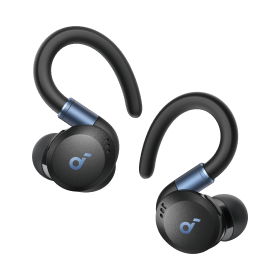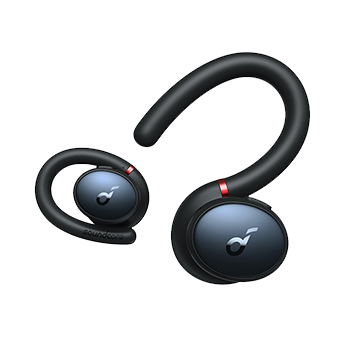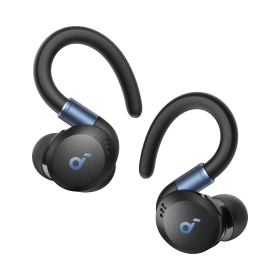What Is a Good dB for Speakers?
The term "decibel" refers to the intensity of a sound or the amount of loudness at which you hear a sound, abbreviated as "dB". The decibel measures the ratio of a change in level, whether it's acoustic Sound Pressure Level (SPL) or electrical signal level.
There are sound levels that can even be high enough to cause damage to one's hearing. Keep the volume between 70–75 dB to protect your hearing. A decibel level of over 85 dB can be dangerous for human ears. And an audible level of 130 dB is considered painful. Most specialists recommend earplugs if you are continuously exposed to 85 dB or above.
Therefore, considering various situations, what is a good dB for speakers to use in everyday life? The answer to your question is provided in this article.
DB Level in Our Daily Life
The normal human adult has the ability to hear frequencies ranging from 2 Hz to 20,000 Hz. Every day, we are exposed to a wide variety of noises, and the decibel level of each sound is different. Any noise that is louder than 70–75 dB has the potential to and does cause damage to our hearing. However, we sometimes don't even know we're exposed to high decibel noise. Therefore, here we introduce some everyday noises along with their decibels:
- Barely audible 0 dB- Threshold of hearing
- 10 dB- Breathing
- 20 dB- Ticking watch
- 30 dB- Soft whisper
- 40 dB– Refrigerator hum
- 50 dB- Moderate rainfall
- 60 dB- Considered to be a comfortable decibel level. Ordinary conversation, light traffic
- 70 dB- Heavy traffic, loud vacuum cleaner, dishwasher
- 80 dB- Truck
- 90 dB- Hair Dryer
- 100 dB- Helicopter
- 110 dB- Extremely loud, it is the sound of a trombone or car horn.
- 120 dB- Painful, it is the limit of one's tolerance for suffering, such as a police siren
Optimal DB Level in Different Situations
Before setting your speakers' volume or dB level, consider where they'll be heard. Indoors, set the volume down, so it's not overly loud. And outdoor events with more participants will require a higher dB level.
When you are determining the dB level, there are a few things that you have to keep in mind.
- Venue - indoor or outdoor
- Equipment - active or passive speakers
- Event - what is the type of the event
Indoor vs Outdoor
Since sound travels in waves, its volume and intensity gradually decrease in the direction of flow. But sound waves are reflected by the objects they meet. A speaker system, for example, would be much more audible in a room since the sound waves would be able to reflect off the ceiling, walls, and floor.

- Indoor
Indoor sound systems take more work to come by. Turning up the volume indoors causes distortion, feedback, and standing waves. These are created by sounds bouncing off walls and hitting the mic again or interacting with other sound waves. If your venue is small, go easy on the bass. Low-frequency vibrations travel further than high-frequency waves. Thus, it can dominate if the bass is too loud indoors.
The decibel level for an indoor event is recommended to be between 75 and 80. You need to set everything up and give a test run to get an accurate idea of the appropriate sound level for an indoor venue.
- Outdoor
You should turn things up as high as possible to ensure everyone at your event can hear. When you're outside, the sound is more likely to spread and reach the ears of others. It's also crucial to know the legal decibel level for outside events. If you exceed the legal limit, you should turn it down.
110 or 120 decibels are advised to reach all areas for outside events. You can examine sound at the closest and farthest distance from the speaker. Make sure the sound is comfortable at both extremes.
Active vs Passive Speakers
Whether your speakers are active or passive can greatly impact how you adjust the dB.

- Active Speakers
Active speakers have their own built-in amplifiers that turn electrical energy into sound waves, giving them superior control over the sound's output. Thus, you don't need to fiddle with several equipments to reach the desired volume.
They also often include other features such as Bluetooth connectivity. What's more, active speakers consume considerably less power than passive ones and are much easier to install and maintain due to the lack of an external amplifier component.
- Passive Speakers
Passive speakers require more technical know-how to set up and an extra piece of equipment. They can be placed farther from power outlets, which is their main benefit.
Passive speakers are simpler to upgrade than active speakers. You can upgrade your amplifier while keeping your current speakers or vice versa. This allows you to gradually improve your sound. As for active speakers, typically it is more difficult or impossible to replace the amplifier or other components.
Type of the Event
The dB level you set for speakers depends on your audio objectives. When setting up and testing the audio, keep its purpose in mind.
If you want to hold a rock party, you require loudspeakers to be strategically placed around the stage and played simultaneously at high volumes. You can choose the soundcore Boom 2 Plus speaker. It is equipped with PartyCast and BassUp technology, allowing you to link 100+ speakers to one audio source device and providing a more intense bass for the outdoor event.
However, if you want to hold a dining party, smaller speakers like soundcore Motion+ will be perfect and make the sound spread more evenly. If someone from the party is going to speak over the music, decrease the mids using EQ. This will reduce interference and make the speaker and music clearer.
FAQ
1. What dB Level Is Best for Music?
Critical listening should be done at varying levels, but 70-75 dB SPL has the optimum frequency balance with minimum hearing injury risk.
2. Is 70 dB Good for a Speaker?
A washer or dishwasher is 70 decibels loud(moderate noise). Noise at 70 dB is safe for human hearing. If you use speakers daily, 70 dB is fine. 70-75 dB is the maximum noise level you should be exposed to daily.
3. What dB Is Best for Bass?
According to Harman's research, a bass boost of 6.6 dB is the sweet spot. We recommend soundcore Motion+ speaker, where you can adjust the bass and EQ from your phone until it's right for you.
Conclusion
The answer to "what dB should I set my speakers" varies on the venue, equipment, and event. Adjust the dB level on your speakers according to your specific occasion and keep it at an ear-friendly dB level to avoid hearing problems.

















































